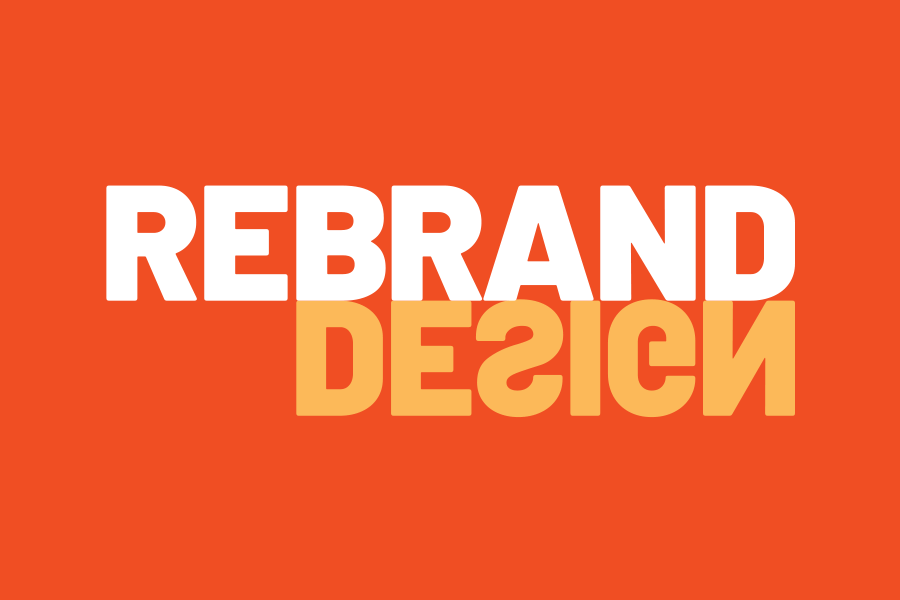If you’re considering rebranding your business, product, or service, it’s important that you understand the difference between a redesign and a rebrand. A redesign is just what it says: a new look. However, a rebrand is so much more.
Undertaking a rebrand is about changing or enhancing market perception. A redesign certainly plays a role in the rebrand. But the redesign should be meaningful—not just a new look. It should evoke new emotions. Remember, emotions are why people make buying decisions.
A rebrand is typically needed for any number of reasons, including:
- Wrong market perceptions
- New or expanded product/service offerings
- New business opportunities
- New company philosophy, values, or vision
- Merger or acquisition
- The value of your company is measured only by the sum of its tangible assets
- Evolving/expanding consumer needs
- New competitors in the marketplace
- Negative online reviews
- Confusion in the marketplace
- Narrow brand strategy
- Expansion into new regions
- Recruitment needs
Each of these require thorough market research. Even if you’re the subject matter expert, following your gut is not enough. Market trends, customer feedback, sales team insights, outside marketing/branding consultants, and more can help ensure that the rebrand aligns with consumer needs and your business opportunities (current and future).
But what is a brand?
Many confuse their brand identity with their brand. Your brand is not your logo. Your brand is the unique space you occupy in the minds of your market (good or bad) that transcends your products and services. It’s what people think of when they hear your name. Once again, good or bad.
Your brand begins with a promise built on a foundation of who you are, what you offer, and why it matters to your audience. It’s shaped by how you connect emotionally with your customers, distinguish your business, and, ultimately, deliver on that promise.
Part of this is brand identity (logo, color palette, graphic design, fonts, and photos).
But the key element is the brand voice (brand promise, story, naming, tagline, and messaging) which the identity supports and reinforces.
The brand identity and brand voice culminate in your website, collateral, social media activities, promotions, public/investor relations, events, sales strategy, and internal communications.
The objective is to align your brand’s vision with your market, distinguish your business from your competitors, and create positive mindshare in your audience. That audience extends well beyond your sales prospects to include media, industry analysts, recruits and employees, competitors, investors, and even friends and family.
The end game is to build brand loyalty by consistently delivering on your brand promise, so others are willing pay a premium for what you offer, come back for more, and refer others.
Brand loyalty creates brand equity.
Brand equity, though non-tangible, adds real value to your business. It’s essentially the positive perception, emotional attachment, and loyalty consumers have towards your brand that influence their buying decisions. High brand equity enables companies to charge premiums, increase their sales, and achieve greater profitability. It also helps them to quickly overcome the occasional misstep without dramatically compromising the brand.
There is plenty of evidence to prove that consumers will pay a premium for a great brand and remain loyal to it. The experience associated with your brand and your ability to promote and maintain it secures that relationship.
A rebrand is no small task.
If you find the need to refresh your brand, think beyond its identity. Take a huge step back and objectively view your business from a 30,000-foot level to clarify your long-term vision and how it impacts your brand promise. Is it still meaningful to your market? Does it provide you with the latitude to make changes without diluting your brand and confusing your audience? (If you find you’ve been changing things frequently, it’s likely that you marketed yourself into a corner that doesn’t provide the room to evolve and grow with your market.)
Determine a realistic budget, the best time to launch, and create a communications plan for rolling it out and, most importantly, maintaining it. Your particular industry will help determine the best tactics to use. (Reality check: it’s not one or two tactics. Going viral on social media is not a marketing plan.) Think outside of the box to get yourself noticed and act boldly. Branding is also about awareness and recall.
Before launching your retooled brand, do some testing. Create a focus group of selected clients, advocates, trusted colleagues, consultants, and employees (not just the C-level) to determine if you’re on-target. Prepare to make changes based on their emotional reactions and feedback. However, this is not the time for taking votes. Marketing is not a democracy. Be prepared to say, “no,” and back it up with your research.
Brand management is never done.
Once you launch your newly refreshed brand, your work is not complete. It’s important to monitor market acceptance and measure its effectiveness. Continually solicit feedback from your customers and other stakeholders. Follow your online reviews and respectfully and quickly respond to and learn from the negative ones. Never lose sight of your competition and the guiding principles that distinguish your business. Strive for consistency and relevance. If you’ve done things correctly, you’ll be able to make adjustments on-the-fly without undoing your work and compromising the launch.
Most of all, be patient. Great brands don’t blossom overnight.
Considering a rebrand?
Let’s talk about what makes you great, why it matters, and how we can help you take your best shot. A call costs you nothing but your time. And, even if you don’t hire us, we’ll likely offer some actionable advice you can move on today.
Related Posts
The one thing we all share and what to do with it
Even if you’re selling widgets, there’s something more than you offer that distinguishes your business in a positive way. It’s what your customers truly gain from you that they can’t get from anyone else. This defines your business more than anything.
Startup branding needs to be done right out of the gate
The bankruptcy courts are full of great ideas that were undermined by ineffective branding and promotion. Build it and they will come? No, they won’t. Not unless you make them really want to. Or, better yet, need to.
Uncover your own path to greatness.
It’s important to look like you belong in your market. But, it’s more important to promote your own uniqueness. Remember, your brand and identity is about differentiation. It’s not about being like the others.




